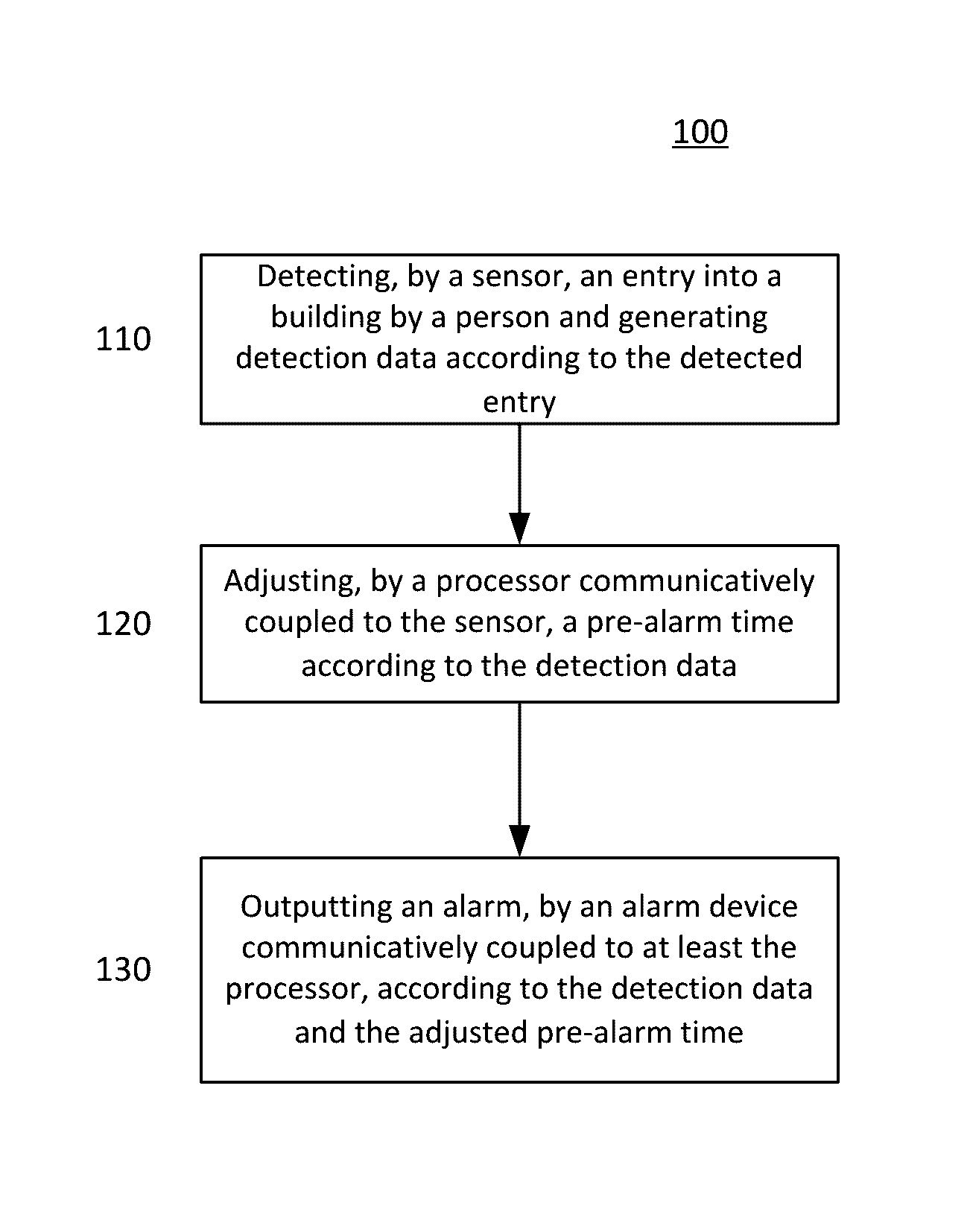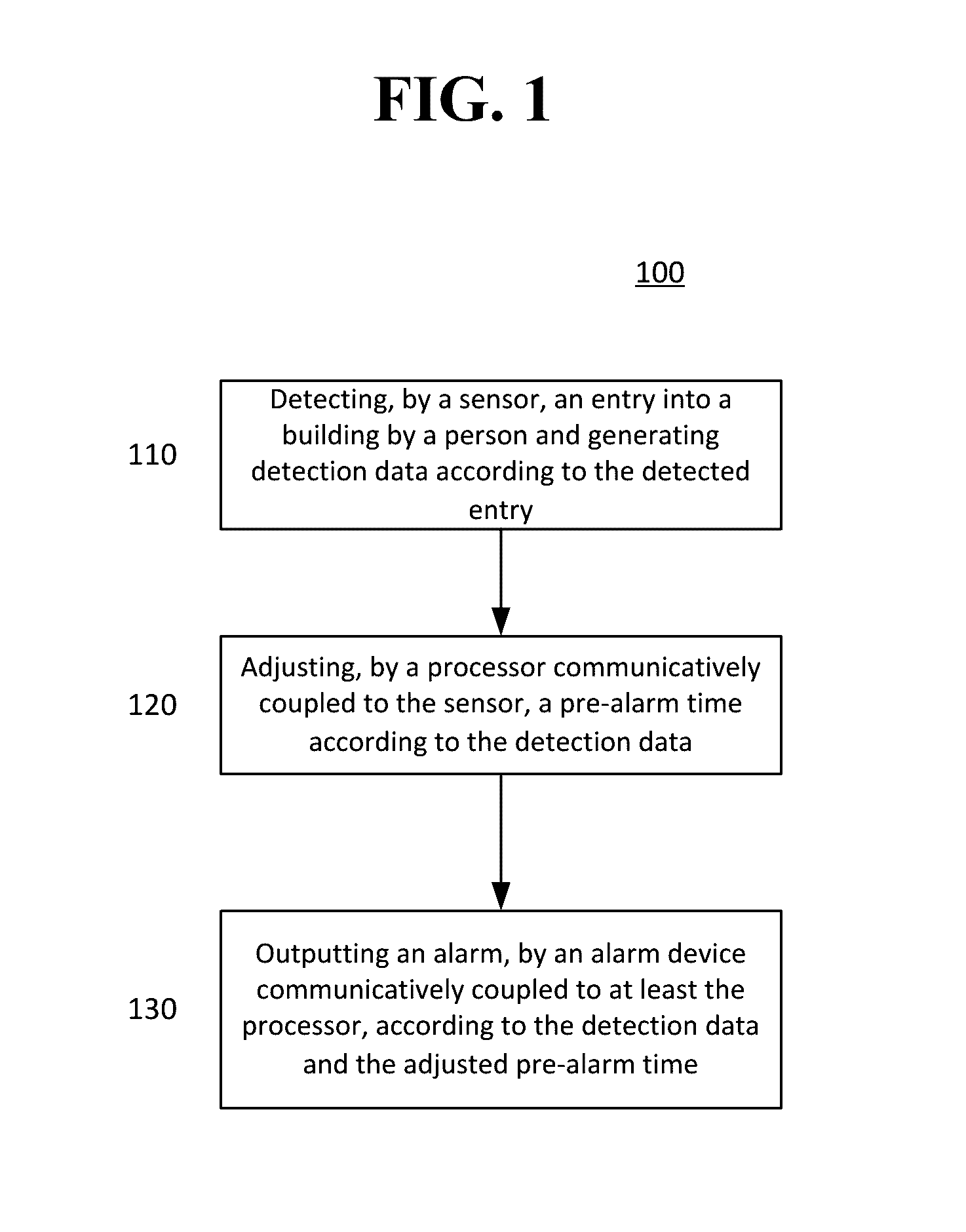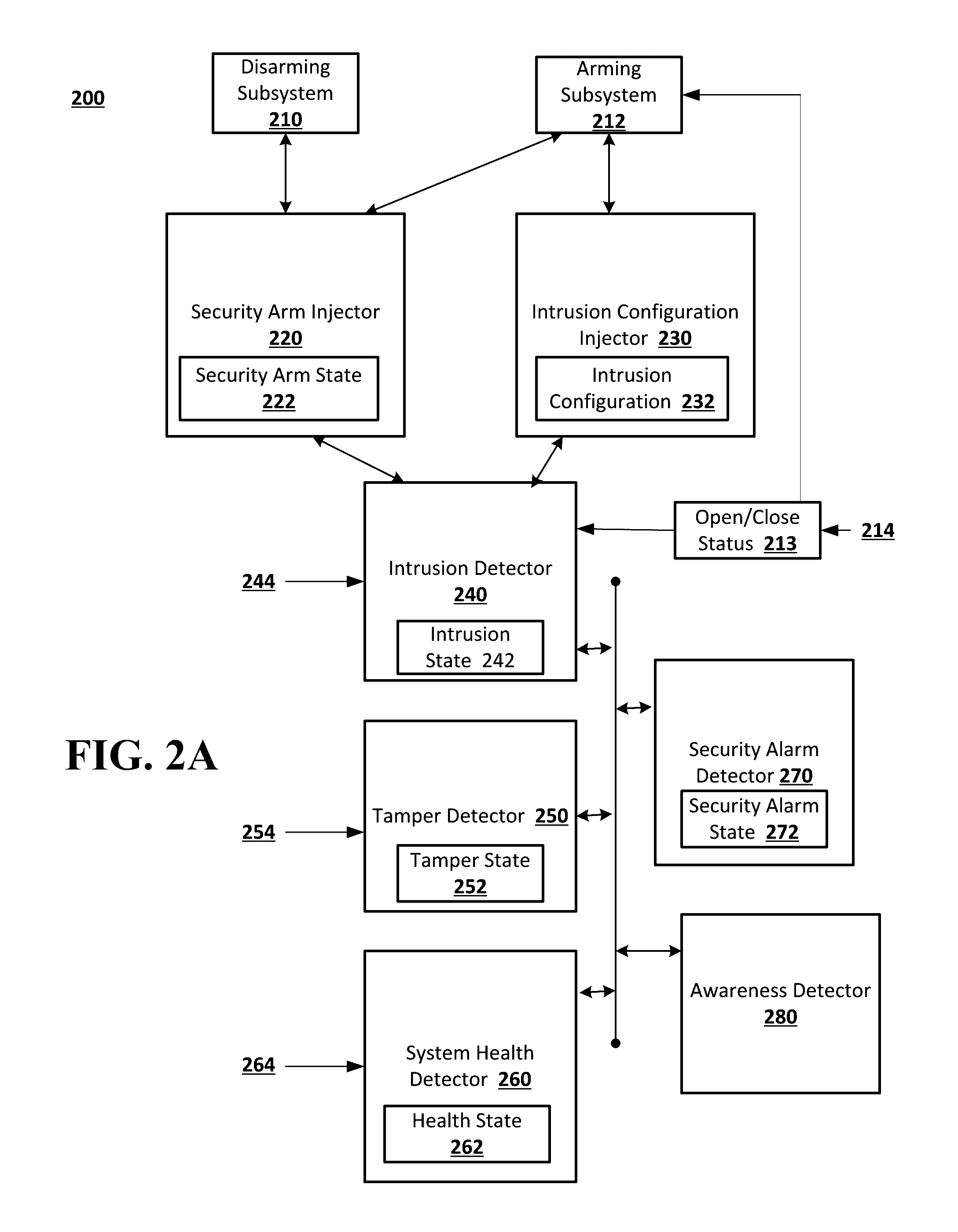Systems and methods of dynamically varying a pre-alarm time of a security system
a technology of security system and pre-alarm time, applied in the field of systems and methods of dynamically varying a pre-alarm time of security system, can solve problems such as false alarms, and achieve the effects of reducing the number of false alarms, sufficient time, and not feeling rushed
- Summary
- Abstract
- Description
- Claims
- Application Information
AI Technical Summary
Benefits of technology
Problems solved by technology
Method used
Image
Examples
Embodiment Construction
[0018]Implementations of the disclosed subject matter provide systems and methods of varying the pre-alarm time of a security system of a smart home environment to provide sufficient time for a user to enter a home so that they do not feel rushed when attempting to disarm the security system. The security system may vary the pre-alarm time according to the time of entry (e.g., time of day that the entry is occurring), the point of entry (e.g., different doors may allow for different pre-alarm times), and the user who is entering (e.g., different users may be allotted different pre-alarm times). The security system may learn the time needed by the user for the pre-alarm time, and may adjust the pre-alarm time over a particular period (e.g., one week, several weeks, or the like). The security system may also learn the point of entry (e.g., doors) that a user typically uses for entry, and / or the time of entry, and may adjust the pre-alarm time. That is, in implementations of the disclo...
PUM
 Login to View More
Login to View More Abstract
Description
Claims
Application Information
 Login to View More
Login to View More - R&D
- Intellectual Property
- Life Sciences
- Materials
- Tech Scout
- Unparalleled Data Quality
- Higher Quality Content
- 60% Fewer Hallucinations
Browse by: Latest US Patents, China's latest patents, Technical Efficacy Thesaurus, Application Domain, Technology Topic, Popular Technical Reports.
© 2025 PatSnap. All rights reserved.Legal|Privacy policy|Modern Slavery Act Transparency Statement|Sitemap|About US| Contact US: help@patsnap.com



